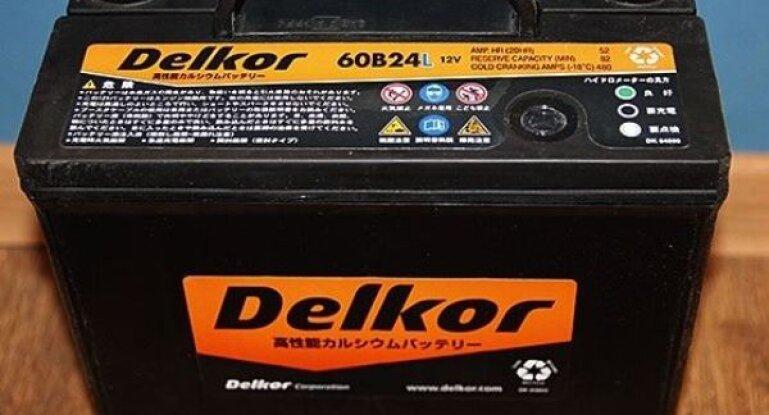
Car Batteries - A Simple Guide
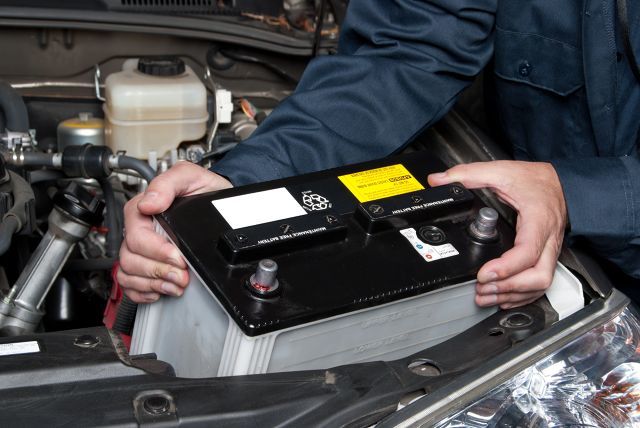 Need a new battery but don't know which one to choose? You don't need to get a PhD in this topic, here is a description of the main types of car batteries and some simple rules for choosing them.
Need a new battery but don't know which one to choose? You don't need to get a PhD in this topic, here is a description of the main types of car batteries and some simple rules for choosing them.
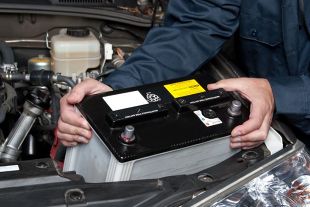 Batteries in cars appeared massively in the 20s, when engineers decided that an electric starter would be best for starting an internal combustion engine. By the way, a power source has appeared that allows, among other things, to supply electric lighting even when the engine is not running. However, its primary task is still to start the engine, so car batteries are so-called starting devices that allow the passage of high currents.
Batteries in cars appeared massively in the 20s, when engineers decided that an electric starter would be best for starting an internal combustion engine. By the way, a power source has appeared that allows, among other things, to supply electric lighting even when the engine is not running. However, its primary task is still to start the engine, so car batteries are so-called starting devices that allow the passage of high currents.
For many years, the choice of the right battery has been reduced to the selection of the appropriate parameters specified by the manufacturer. Today, when there are various types of batteries with mysterious markings on the shelves, the matter does not seem so simple. But only in appearance.
Lead acid batteries
This is the oldest type of battery, invented in 1859. Since then, the principle of its construction has not changed. It consists of a lead anode, a lead oxide cathode and a liquid electrolyte, which is a 37% aqueous solution of sulfuric acid. When we talk about lead, we mean its alloy with antimony, with calcium and antimony, with calcium, or with calcium and silver. The last two alloys predominate in modern batteries.
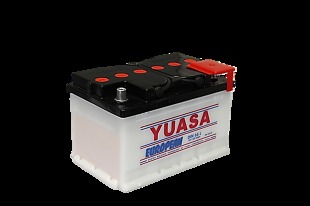 privileges: The advantages of "standard" batteries include relatively low price, high durability and high resistance to deep discharge. Recharging an "empty" battery completely restores the original settings. However, it should be remembered that maintaining the state of full or partial discharge for a longer time leads to acidification, which irreversibly reduces the parameters and significantly reduces the durability.
privileges: The advantages of "standard" batteries include relatively low price, high durability and high resistance to deep discharge. Recharging an "empty" battery completely restores the original settings. However, it should be remembered that maintaining the state of full or partial discharge for a longer time leads to acidification, which irreversibly reduces the parameters and significantly reduces the durability.
defects: Common disadvantages of lead-acid batteries include the risk of oxidation and the need to regularly check the electrolyte level. Prolonged use at a deficit leads to a reduction in battery life.
applicationA: Lead-acid batteries are the most popular type of starter batteries. In the automotive industry, it is widely used in almost all types of vehicles, incl. in cars, trucks, motorcycles and tractors.
 Gel batteries
Gel batteries
In batteries of this type, the liquid electrolyte is replaced by a special gel obtained by mixing sulfuric acid with silica. Many drivers consider using it in their vehicle, but despite its many benefits, it is not a recommended solution.
privilegesA: Gel batteries have many advantages over wet lead acid batteries. Firstly, they can be installed in any position, they are resistant to deep tilts and even short-term operation in an inverted position, Secondly, the electrolyte in the form of a gel does not evaporate, does not need to be topped up and, importantly, the risk of leakage is very low even in case of mechanical damage. Thirdly, gel batteries are resistant to vibration and shock. Cyclic wear resistance is approximately 25% higher than lead-acid batteries.
defects: The main disadvantage of gel batteries is their low power when supplying high currents, especially at low temperatures. As a result, they are not used in cars as starter batteries.
application: Gel batteries as starting units are used in the automotive industry, but only in two-wheeled vehicles, where starting currents are much lower, operation takes place in the summer, and the working position can deviate significantly from the vertical. They are also ideal as stationary devices, for example in caravans, campers or as auxiliary batteries in off-road vehicles.
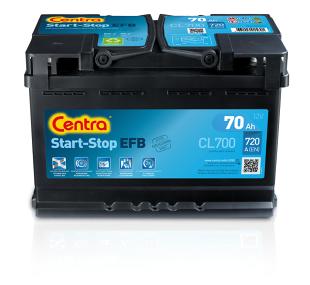 Batteries EFB/AFB/ECM
Batteries EFB/AFB/ECM
The abbreviations EFB (Enhanced Flooded Battery), AFB (Advanced Flooded Battery) and ECM (Enhanced Cycling Mat) stand for long life batteries. In terms of design, they use a larger electrolyte reservoir, lead-calcium-tin alloy plates, and double-sided polyethylene and polyester microfiber separators.
privileges: Compared to conventional acid batteries, they have twice the cyclic life, i.e. designed for twice as many engine starts as conventional batteries. They feel good in cars with a large number of pantographs.
defects: Long life batteries are not resistant to deep discharge, which reduces their efficiency. The high price is also a disadvantage.
application: Long life batteries are designed for cars equipped with a start-stop system and cars with extensive electrical equipment. They can be used as a replacement for lead-acid batteries.
AGM batteries
 The abbreviation AGM (Absorbent Glass Mat) means a battery with separators made of mats of glass microfiber or polymer fiber that completely absorbs the electrolyte.
The abbreviation AGM (Absorbent Glass Mat) means a battery with separators made of mats of glass microfiber or polymer fiber that completely absorbs the electrolyte.
privileges: AGM is a product that is three times more efficient, based on the number of starts, than a standard battery. Other advantages include high shock, vibration or leakage resistance, low energy loss and low internal resistance.
defectsA: The biggest drawback is definitely the high purchase prices. Others include sensitivity to overcharging and high temperatures. For the latter reason, they are placed in the cabin or trunk, and not in the engine compartment.
application: AGM batteries are specially designed for vehicles equipped with start-stop and energy recovery systems. Due to their sensitivity to high operating temperatures, they are not suitable as a replacement for conventional batteries installed in the engine compartment.
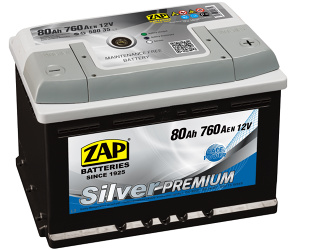 Good or maintenance-free battery?
Good or maintenance-free battery?
A traditional battery requires periodic maintenance. Due to evaporation, it is necessary to replenish the electrolyte level by adding distilled water to the cells. The correct level is marked on the case. The advantages of this type of design include a long service life, but only under the condition of constant monitoring of the electrolyte level.
Increasingly, we are dealing with maintenance-free batteries, where you do not have to worry about the electrolyte level. Low evaporation of water was achieved thanks to plates made of an alloy of lead with calcium or lead with calcium and silver. The body is designed in such a way that most of the water returns to the liquid state. To prevent the risk of an explosion due to overcharging, manufacturers use a one-way safety valve called VLRA (Valve Regulated Lead Acid).
Battery of the future
Today, more than 70% of new cars on the market are equipped with a start-stop system. Their share will continue to increase, so the near future belongs to batteries with a long service life. Increasingly, engineers are using simple energy recovery systems, which will lead to an increase in the market share of AGM batteries. But before the era of hybrid or electric vehicles arrives, we may face another small “revolution” thanks to a Polish company.
Battery manufacturer ZAP Sznajder from Piastow has a patent for a carbon battery. The plates are made of spongy glassy carbon and coated with a thin layer of lead alloy. The advantages of this solution include much lighter battery weight and lower estimated manufacturing costs. However, the challenge is to master the production technology that allows such batteries to be mass-produced.
How to choose the right battery?
The first is the amount of space we have. The battery must be large enough to fit on its base. Secondly, the polarity, often the arrangement is such that when buying, we need to know which side should be positive and which should be negative. Otherwise, we will not be able to reach the cables and will not be able to connect the battery to the unit.
For each car model, the manufacturer has determined the appropriate type of battery. Its parameters - capacity in ampere-hours [Ah] and starting current in amperes [A] - are defined in such a way that they are enough to start the engine even in severe frosts. If the engine and electrical system are running efficiently and starting smoothly, there is no reason to consider using a larger battery or higher starting current.
Large can more?
Using a battery with higher parameters makes it easier to start the engine, but it also has disadvantages. Higher starting current will help the starter start the engine faster, but often means shorter battery life. More displacement means more starts, which is especially important in winter for diesel engines. When using large capacities, we take into account the phenomenon of self-discharge (expressed in% in relation to the capacity), therefore, when we use the car rarely and for short distances, the generator may not have time to fully charge the battery, especially if the excess energy is small. So if we have a battery with much higher parameters than recommended, it is reasonable to regularly check the state of its charge. It is recommended that a more powerful battery have a capacity of no more than 10-15% recommended by the manufacturer. Remember, however, that a better rated battery will be heavier and more expensive to purchase, and may also have a shorter life (high currents, undercharging).
